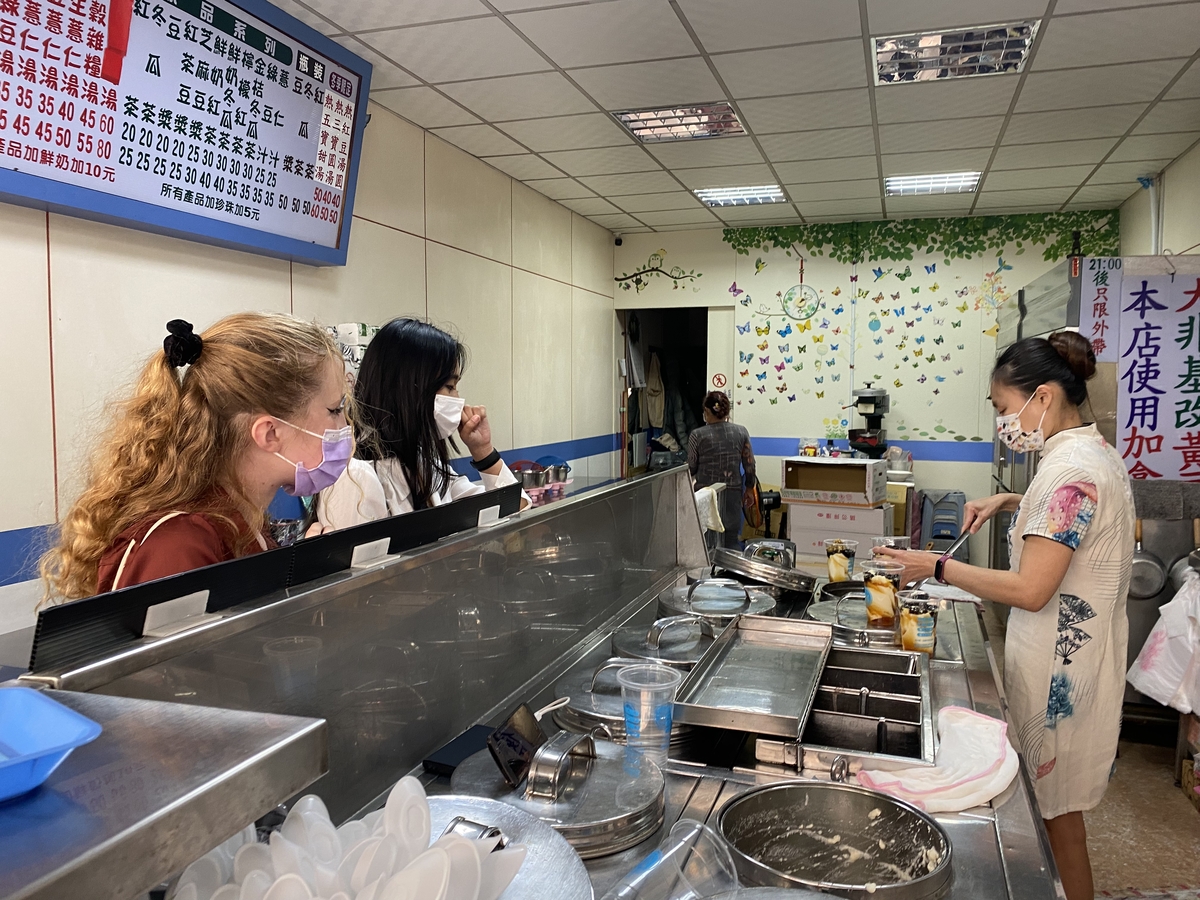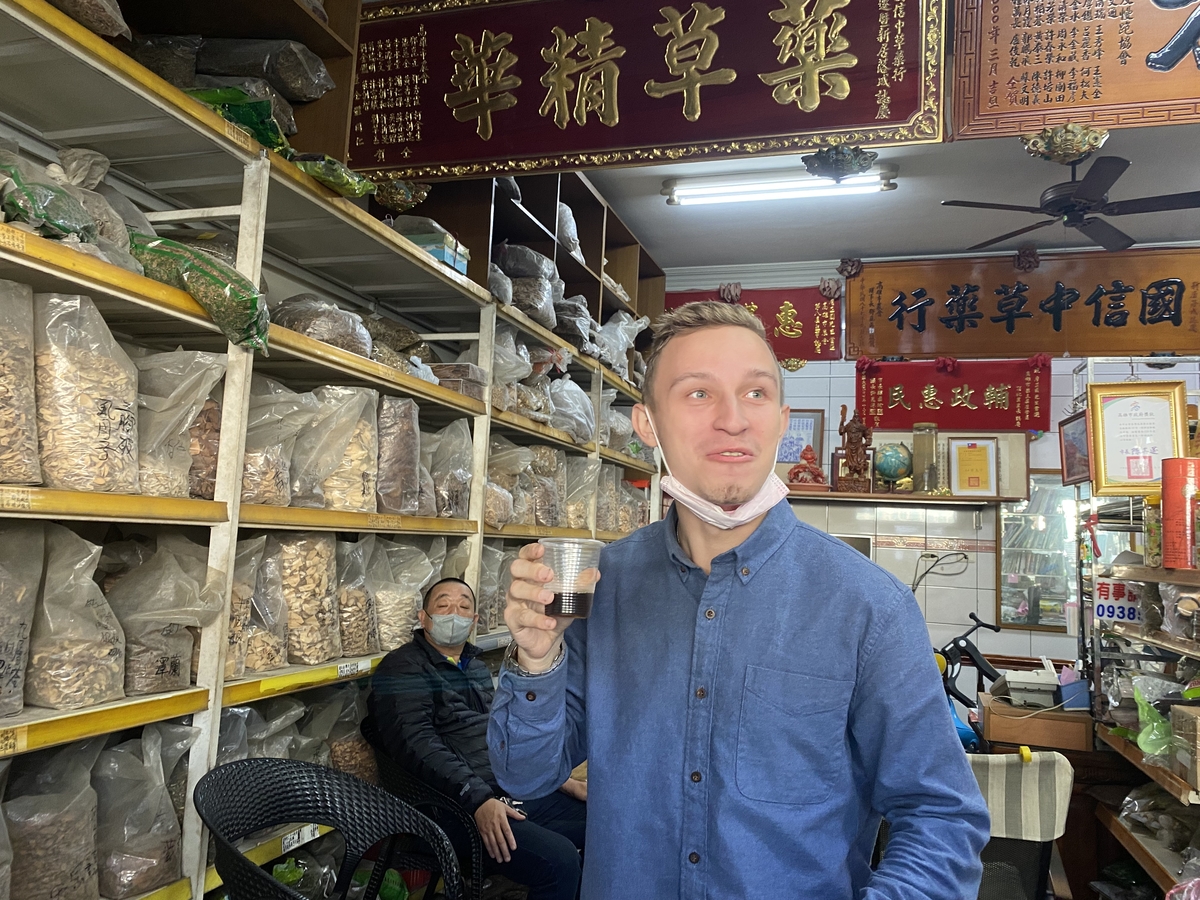The Crossing Zuoying team of the Humanity Innovation and Social Practice (HISP) project organized a walking tour for international students of NSYSU – “Oo-peh-la reception room: Foreigners’ walking tour in Zuoying”. The participants walked around the Lotus Pond area in the old part of Zuoying District: the market, old streets, and tried connecting with local sellers and residents, experiencing Taiwanese local culture.
This event was a collaboration between The Crossing Zuoying team of HISP and Assistant Professor Thiombiano Dramane Germain of the International Master Program in Asia-Pacific Affairs at NSYSU. The organizers invited international students from three continents – Europe, Asia, and Africa to participate. The students were guided by HISP team members around Hello Market, Zuoying Avenue, and Xiling Street in old Zuoying, where the students were asked to find items “unique to Taiwan” or “useful to them”.
During the event, Professor Germain wanted the students to think about how to express their wish to buy something, given the possibility of misunderstanding due to cultural and language differences. Since most of the participating students do not speak Chinese and are not familiar with the Taiwanese culture, the HISP program members explained the significance and use of the products as appropriate but the students had to deal with the merchants themselves and there were inevitable misunderstandings in the process. For example, some students wanted to buy tofu pudding at Yu Zu Tofu Pudding but in the process, the seller understood that the students wanted to buy ice. It was precisely this kind of cultural and linguistic misunderstanding that Professor Germain wanted students to experience and learn how to deal with.
Most of the international students who participated in the event said that they had never thought that next to the fanciest part of Kaohsiung City there could be a place like Zuoying that preserves Taiwan’s traditions. Many students mentioned language communication and cultural aspects in their feedback. For example, Juliette Selex from France said that she encountered problems when ordering food and could not accept the taste of some dishes, however, she could understand the traditions behind these local flavors. Igor Sobolev from Russia, who speaks a little Chinese, was able to understand the owner of the “Shun Fang Tang Incense Shop” on Zuoying Road explaining the method of throwing the divination blocks (bwei) and he enthusiastically bought a pair of crescent-shaped blocks. Joaquin Alfonso Vega Toledo, who is from the Philippines, mentioned that the form of the Hello Market and the products sold reminded him of his hometown and this made him feel at home.
Some of the students gave suggestions and opinions regarding the situation of the old Zuoying. Juliette noticed that many industries and the culture of the old Zuoying are quickly disappearing. Joaquin believes that the progress of this district does not necessarily mean abandoning the past but rather preserving the local culture of these traditional stores and passing it on to the next generation. Healy Mareh N. Reyes, who is also from the Philippines, mentioned that with today’s technological advances and the global pandemic, the businesses in the old Zuoying need to think about how to use new technology to build and retain connections with new and old customers, try new ways of marketing promotion, and bring in the power of the young generation to spread the word about the old Zuoying from their point of view.
Postdoctoral researcher Wei-Lih Yeh, who is in charge of the HISP team’s projects in Zuoying, said that the idea behind the “Foreigners’ walking tour in Zuoying” was to bring creative energy into this old community, enhance the area’s visibility, and inspire young people’s concern for their native soil. She also mentioned that the HISP team takes on the role of a hub to connect people and affairs that are not likely to be brought together. In the previous foreigners’ walking tour in Zuoying, HISP led foreign students to experience local businesses in old Zuoying in the form of a live broadcast, such as traditional pastry-making in Xiling Street and the culture of the military dependents’ village. The local sellers were initially nervous because of the language barrier, but after the event, they gave many positive comments. The owner of the Fu Tian Traditional Handmade Pastry on Xiling Street even said, “This was the first time in more than 60 years that we had foreigners coming to our store, and it is a dream come true for Taiwanese traditional pastries to go international!” She believes that leading international students to experience local businesses and culture in the old Zuoying was a meaningful activity that brought interesting observations on the spending habits of people from different countries. It is worth mentioning that although the international students have been in Taiwan for a few months to a year, they have never set foot in the old Zuoying District and this walking tour gave them a deep impression of what Taiwan looked like back in the days. For the local businesses owners, the experience of language barrier and culture shock will bring new stimuli for the local community to maintain its vitality in the future.
Associate Professor Szu-Hsien Lee of NSYSU Department of Music, who is the convener of the Zuoying team of the HISP project, said that foreign tourists usually gather around the old Zuoying area near Turtle Hill, where tour buses can be parked, or by Lotus Pond, an area with many temples. This time, the “Oo-peh-la Parlor reception room: Foreigners’ walking tour in Zuoying” led international students deeper into the local life on foot and involved making the most basic purchases to interact with local businesses. This has not only been a chance for foreigners to see the local life more clearly than an average tourist but also to drive the local community to directly experience the possible impacts of future urban transformation.


帶領國際學生走踏舊左營.jpg)



解釋春聯意涵.jpg)
